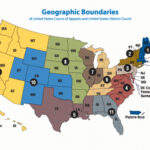UPLA’s Accomplishments and Plans for 2025 to Keep Public Lands Open
Since our inception in 2014, UPLA has been fighting for access by all responsible users on our public lands. Although we initially focused primarily on Washington County and Sand Mountain, in the last 2 years we expanded our efforts to include the entire state and other forms of outdoor recreation. We focused on building and strengthening partnerships with others and educating our supporters and followers about how to make a difference in keeping our public lands open.
We are proud of our achievements to protect and improve access for not only off highway vehicles but all forms of outdoor recreation, here’s a few.
- Recommended, justified, wrote grant, and installed 2 state-of-the-art composting toilets on Sand Mountain
- Organized Sand Mountain maintenance project with 150 4×4 and OHV users working together for 2 days installing trail signs and cleaning up dump sites on the perimeter of the BLM land. We also achieved TV Coverage for this event.
- Designed, fabricated, funded and installed Sand Hollow Trail Head Signs on all major trails
- Designed, fabricated, funded and installed Obstacle signs on major obstacles on Sand Mountain
- Worked with BLM to create detailed maps and information panels for 6 kiosks on Sand Mountain
- Obtained approval and installed the Top of the World signpost on Sand Mountain
- Created a website with over 1000 gpx tracks in Utah and surrounding states
- Wrote and supported the App used by St George Jeepers to schedule and promote their weekly trail runs
- Wrote and supported the App used by the Winter Jamboree Trail Guides
- Kevin Keller interviewed multiple times on Fox13 to speak out against the 317 miles of land closures
- Numerous appearances on At Your Leisure Programs
- Launched TrailSaver.com, the first effort to collect trail and route information details at the time users run the trails, then return their notes when they are needed for a Travel Management Action
- Assisted with creation of Waddy’s Corral, a 5 acre staging area to replace the Water Tanks staging area which had become woefully too small for the traffic.
- Assisted with paving Water Tank Road to accommodate increased traffic
- Liaison with Utah State Parks and DNR Law Enforcement to stabilize rates being charged to Events using Sand Hollow State Park
- Led campaign to protect OHV on West side of Sand Mountain and allow the reservoir project without serious objections.
- Participated in numerous cleanups of trash being dumped on perimeters of public lands
- Obtained Access Protection Grant from Utah DNR
- Obtained Grant from Yamaha Outdoor Access Initiative to protect Flintstone House on Sand Mountain
- Liaison established with Utah Public Lands Policy Coordinating Office
- Increased size of Board of Trustees to include wider geographic representation and more diverse outdoor recreation activities
- Increased our Follower base on social media over 400%
- Engaged with Utah Legislature on numerous bills affecting use of public lands
- Participated with DOR OHV program for media creation
- Organized and cosponsored NEPA Advanced Training Workshop with BlueRibbon and SLOREX
- Constant Coordination with BlueRibbon Coalition on actions affecting public lands
- Donated $103,316 to BlueRibbon Coalition for Legal Support
- Participated on countless podcasts and Zoom interviews
- Recognition by Western Priorities as one of 6 members of the National Monuments Disinformation Brigade
- Presentations of Major Legal Battle Wins at Family Motor Coach Association 4 Wheelers and at NMRAC meeting
- Hired Professional Natural Resource Consultant to supercharge our efforts at creating substantive and extensive comments. We submitted comments on:
- Labyrinth Rim Travel Management Plan
- Manti-La Sal National Forest Land Management Plan
- San Rafael Swell Preliminary and Draft EA Travel Management Plan
- Henry Mountains Preliminary and Draft EA Travel Management Plan
- Bears Ears National Monument Resource Management Plan
- Dolores River Travel Management Plan Scoping
- BLM Conservation and Landscape Health Rule
- Red Cliffs Warner Valley Land Exchange Scoping and EA Comments
- Western Solar Plan
- We participated in many events/meetings to spread our message
- UTV Takeover
- OHV Day on the Hill (Legislative)
- Big 20 Ride
- Trail Hero
- Winter 4×4 Jamboree
- Iron Country OHV
- Salt Lake Off Road Expo
- UORA Roundtables
- SxS Adventure Rally on the Rocks
- Outlaw ATV Jamboree
- Vernal Rock Rally
- Castle Country 4×4 Club Meeting
- Tri State ATV Club Meetings
- Utah ATV Association Meetings
- UT/AZ ATV Club Meeting
- Bryce Canyon Recreation Council
- BLM Blueprint Conference
- House Congressional Hearing in St George on Public Lands
- Barracks Trail Ride with UT/AZ ATV Club and BLM to Retain OHV Access
- Matt’s Offroad Games
- North American Motorized Recreation Council Meeting (NAMRC)
Major New Goals:
- Educate OHV users on the threats to access to our public lands, interventions UPLA and other organizations are engaged in, and how users can help us protect access to our public lands. Educate clubs on how to utilize OHVR grants to accomplish projects, find funding, and utilize UDOR Regional Trail Crews as needed. We are going to promote safe and responsible OHV use using many approaches. Develop and distribute training videos as necessary to educate OHV users on proper etiquette and behaviors such as how OHV riders should behave when they encounter Equestrians on a shared trail, or perhaps how to make effective contacts with local, state and Federal agencies and elected officials.
- Develop and Publish a Utah OHV Impact Study in coordination with UDOR. The study will be completed by a major Utah University, and will be the first one done since 2008 that analyzes the benefits of OHV. This will be an important tool to demonstrate the trends of OHV recreation in Utah, compare it to surrounding states, and provide information for communities to use in developing resources for OHV Recreation.
- Coordinate with Utah Department of Outdoor Recreation to develop and promote common goals, including existing programs such as OHV Program rider education.
- Expand our Board of Trustees to identify and include other outdoor recreation users that share our goals of broad access to our public lands. Our By Laws authorize up to 24 Trustees, we now have 16 Trustees from around Utah representing 4×4, UTV/ATV, Motorcycles, Repair Shops, OHV Clubs, Law Enforcement, Media Production, Education, Mountain Biking, and Competitive Events. Short Term Goals include continuing to expand representation with other areas such as event organizers, equestrians, mapping and similar.
- Dec 2025 Additional 2 Members, Total 17 Members
- Dec 2026 Additional 2 Members, Total 20 Members
- Specific Actions to Support Goals
- Social Media Presence-Social Media and Emailed Newsletter Support are a key way to educate users about our goals and calls to action. Here are some specific goals:
- Facebook-Increase Views from 45,000 and Reach of 10,000 to
- Dec 2025 Views 50,000 Reach 12,000
- Dec 2026 Views 55,000 Reach 14,000
- Instagram Increase Views from 35,000, Reach from 15,000
- Dec 2025 Views 45,000 Reach to 20,000
- Dec 2026 Views 55,000 Reach to 25,000
- Expand Youtube and X Channel Engagement
- Increase Subscribers from 5200 to following and maintain Open Rate of >50% on Constant Contact
- Dec 2025 6000
- Dec 2026 6500
- Grow Club Contacts 15% each year, currently 132
- Facebook-Increase Views from 45,000 and Reach of 10,000 to
- Club and Event Attendance
- In 2024, we attended 10 OHV Club Meetings, all in SW Utah. We want to double these meetings throughout the state. 15 in 2025, 25 in 2026.
- Events-In 2024, we attended 35 days of events to spread our message. We want to increase these to 45 days in 2025 and 50 days in 2026
- Build TrailSaver and Comments Coach to increase substantive user comments. Goals cannot be set at this time for Comments Coach because we do not have an accurate forecast of the number of travel plans to be implemented under the new administration. Goal will be to accumulate 700 Trail Saver reports in database by Dec 2025, 1,400 in 2026.
- Build our volunteer efforts to achieve wider engagement so we can be present in more in-the-field activities. Encourage participation with other non profits and government programs such as the Utah Cultural Site Stewardship Program.
- Develop personal relationships with Land Managers around the State. In person meetings and trail rides with staff and local clubs.
- Hire a Professional Executive Director to further expand our reach and effectiveness and develop activity and accountability reporting
- Social Media Presence-Social Media and Emailed Newsletter Support are a key way to educate users about our goals and calls to action. Here are some specific goals:
- Lobbying-As a 501(c)3, UPLA is allowed to engage in limited lobbying activity. We filed 501(h) lobbying election so that we have clearly defined limits on our engagement level. Only registered lobbyists and unpaid volunteers and board members will be engaged in lobbying activities.
- Financial Growth-Continue pursuing diverse funding to accomplish our mission by ensuring we can support all of the following:
- Donations for litigation and lobbying for access protection to other organizations-$50,000 Annually
- Program Expenses have averaged approximately $100,000 annually for the last 2 years. We need to continue offering more financial support to other groups and organizations by offering funding support for their projects (for example… helping OHVR grant recipients meet their match requirements)
- Provide Grant Writing Assistance to other Organizations, including financial assistance
- Identify and Develop Diverse Funding Sources with private fundraising efforts with continued focus on donations from donor advised funds, securities transfers, and property donations
- Apply for and utilize grants as needed to achieve our goals

